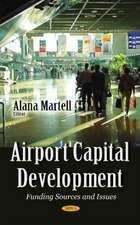Designing Optimal Models of Financial Regulation in a Changing Financial Environment
Autor Marianne Ojoen Limba Engleză Hardback – iul 2016
Preț: 1260.60 lei
Preț vechi: 1617.81 lei
-22% Nou
Puncte Express: 1891
Preț estimativ în valută:
241.21€ • 252.52$ • 199.59£
241.21€ • 252.52$ • 199.59£
Carte disponibilă
Livrare economică 15-29 martie
Preluare comenzi: 021 569.72.76
Specificații
ISBN-13: 9781634848299
ISBN-10: 1634848292
Pagini: 250
Ilustrații: illustrations
Dimensiuni: 180 x 260 x 19 mm
Greutate: 0.62 kg
Editura: Nova Science Publishers Inc
Colecția Nova Science Publishers Inc
ISBN-10: 1634848292
Pagini: 250
Ilustrații: illustrations
Dimensiuni: 180 x 260 x 19 mm
Greutate: 0.62 kg
Editura: Nova Science Publishers Inc
Colecția Nova Science Publishers Inc
Cuprins
For Complete Table of Contents, please visit our website at: https://www.novapublishers.com/catalog/product_info.php?products_id=57733























